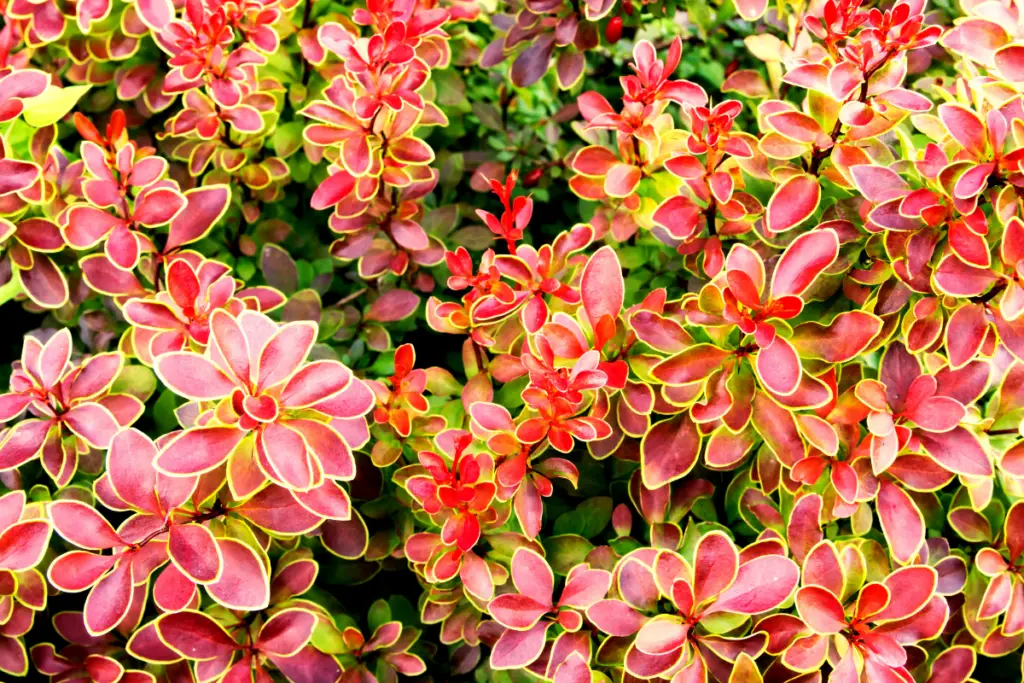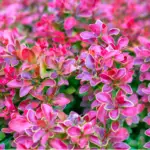Berberis thunbergii, commonly known as Japanese barberry, is a popular ornamental shrub that is widely grown in gardens across the world.
This versatile plant is known for its striking foliage, which ranges from bright green to deep purple, and its small, bright red berries, which add a splash of color to the garden.
When it comes to planting berberis thunbergii, there are a few things to keep in mind.
First and foremost, this plant prefers well-drained soil and full sun to partial shade. It can tolerate a range of soil types, from sandy to clay, but it does not do well in wet or waterlogged soil.
Additionally, it is important to consider the mature size of the plant when choosing a planting location, as some varieties can grow quite large.

Overall, berberis thunbergii is a hardy and low-maintenance plant that can add a splash of color and texture to any garden. With proper planting and care, it can thrive in a variety of settings, from urban balconies to country estates.
Whether you are a seasoned gardener or a beginner, this versatile shrub is well worth considering for your next landscaping project.
Table of Contents
Understanding Berberis Thunbergii
What is Berberis Thunbergii?
Berberis Thunbergii is a deciduous shrub that is native to Japan. It is a popular landscaping plant because of its unique features such as its colorful leaves, thorny branches, and small yellow flowers that bloom in spring. The plant can grow up to 6 feet tall and 8 feet wide.
The leaves of Berberis Thunbergii are usually red, green, or purple and can change color depending on the season.
The thorny branches make the plant an excellent choice for hedges and borders, providing a natural barrier that deters animals and intruders.
Why is Berberis Thunbergii Popular?
Berberis Thunbergii is a popular landscaping plant for several reasons. First, it is easy to grow and maintain, making it an excellent choice for homeowners who want a low-maintenance garden.
Second, the plant is versatile and can be used in various landscaping designs, such as hedges, borders, and accent plants.
Third, the plant’s colorful leaves add a pop of color to any garden, making it an attractive addition to any landscape design.
Berberis Thunbergii is also known for its medicinal properties. The plant contains berberine, an alkaloid that has been used in traditional medicine to treat various ailments such as diarrhea, infections, and inflammation.
However, it is essential to note that the plant should not be ingested without consulting a medical professional.
Factors to Consider Before Planting Berberis Thunbergii
Climate and Weather
Before planting Berberis Thunbergii, it is important to consider the climate and weather of the area. This plant thrives in regions with cold winters and hot summers.
It can tolerate temperatures as low as -20°F and as high as 90°F. However, it may not survive in areas with extreme temperatures or high humidity.
Soil Type and pH
The soil type and pH level are important factors to consider before planting Berberis Thunbergii.
It prefers well-drained soil with a pH level of 5.5 to 7.5. It can also tolerate a wide range of soil types, including clay, loam, and sand. However, it may not grow well in soil that is constantly wet or has poor drainage.
Sunlight Requirements
Berberis Thunbergii requires full sun to partial shade to grow properly. It can tolerate some shade, but it may not produce as many flowers or berries.
It is important to plant it in an area that receives at least 6 hours of sunlight per day.
Overall, it is important to consider the climate, soil type, and sunlight requirements before planting Berberis Thunbergii.
By taking these factors into account, gardeners can ensure that their plants grow healthy and strong.
Where to Plant Berberis Thunbergii
Ideal Spots for Planting Berberis Thunbergii
Berberis Thunbergii, also known as Japanese Barberry, is a versatile shrub that can grow in a variety of locations.
It is a hardy plant that can tolerate a wide range of soil types and moisture levels, but it thrives in well-draining soil that is slightly acidic. Berberis Thunbergii prefers full sun to partial shade, but it can also grow in shaded areas.
When planting Berberis Thunbergii, it is important to choose a location that provides enough space for the shrub to grow to its full size.
The shrub can grow up to 6 feet tall and wide, so it needs enough room to spread out. It is also important to plant Berberis Thunbergii away from other plants, as it can be invasive and crowd out other species.
Some ideal spots for planting Berberis Thunbergii include:
- Along a fence or property line
- In a mixed border with other shrubs and perennials
- In a rock garden
- As a low hedge or edging plant
Avoid Planting Berberis Thunbergii in These Locations
While Berberis Thunbergii is a hardy plant that can grow in many locations, there are some spots to avoid when planting this shrub.
Berberis Thunbergii should not be planted in areas where it can spread to natural areas, as it can become invasive and crowd out native plants.
Some locations to avoid when planting Berberis Thunbergii include:
- Wet or poorly-drained soil
- Areas near waterways or natural areas
- Invasive plant-free zones
- Areas with limited space for growth
Planting Berberis Thunbergii
Preparing the Soil
Before planting Berberis Thunbergii, it is important to prepare the soil properly. The soil should be well-draining and have a pH level between 5.0 and 6.5. If the soil is too acidic, add lime to raise the pH level. If it is too alkaline, add sulfur to lower the pH level.
It is also recommended to mix organic matter, such as compost or aged manure, into the soil to improve its texture and fertility.
This will help the roots of the Berberis Thunbergii to establish more easily and grow stronger.
Planting Berberis Thunbergii
The best time to plant Berberis Thunbergii is in the spring or fall. Choose a location that receives full sun to partial shade, and make sure there is enough space for the plant to grow to its mature size.
When planting, dig a hole that is twice as wide and just as deep as the root ball. Gently loosen the roots and place the plant in the hole, making sure the top of the root ball is level with the soil surface. Backfill the hole with soil, and water the plant thoroughly.
It is important to space Berberis Thunbergii plants at least 3 to 4 feet apart to allow for proper air circulation and to prevent overcrowding.
Caring for Berberis Thunbergii
Once planted, Berberis Thunbergii requires minimal care. Water the plant deeply once a week, especially during hot and dry weather. Mulch around the plant to help retain moisture and suppress weeds.
Prune Berberis Thunbergii in the late winter or early spring to remove any dead or damaged branches and to shape the plant. Wear gloves when pruning, as the plant has sharp thorns.
Fertilize Berberis Thunbergii in the spring with a balanced fertilizer, such as 10-10-10. Follow the instructions on the fertilizer package for the correct amount to use.
Conclusion
Planting Berberis Thunbergii can be a great addition to any garden or landscape. With its vibrant colors and low maintenance, it is a popular choice among homeowners and landscapers alike.
When choosing the right location to plant Berberis Thunbergii, it is important to consider its growing requirements. It prefers full sun to partial shade and well-drained soil.
It is also important to avoid planting it near walkways or other areas where people may brush against it due to its thorny nature.
Overall, Berberis Thunbergii is a great landscaping option for those looking to add color and texture to their outdoor space.
By following the proper planting guidelines and considering its growing requirements, it can thrive and bring beauty to any garden or landscape.
- How to Build a Planter Box for Bamboo: A Step-by-Step Guide

- Can Robotic Lawnmowers Handle Steep Slopes?

- Do You Need a Specific Lawn for a Robotic Lawnmower? Expert Advice

- Are Robotic Lawnmowers Safe for Pets and Children? Safety Features of Robotic Lawnmowers

- Why Use Robotic Lawnmowers? Advantages of Using a Robotic Lawnmower

- Is the GARDENA SILENO City 300 Cordless or Corded? A Clear Answer














